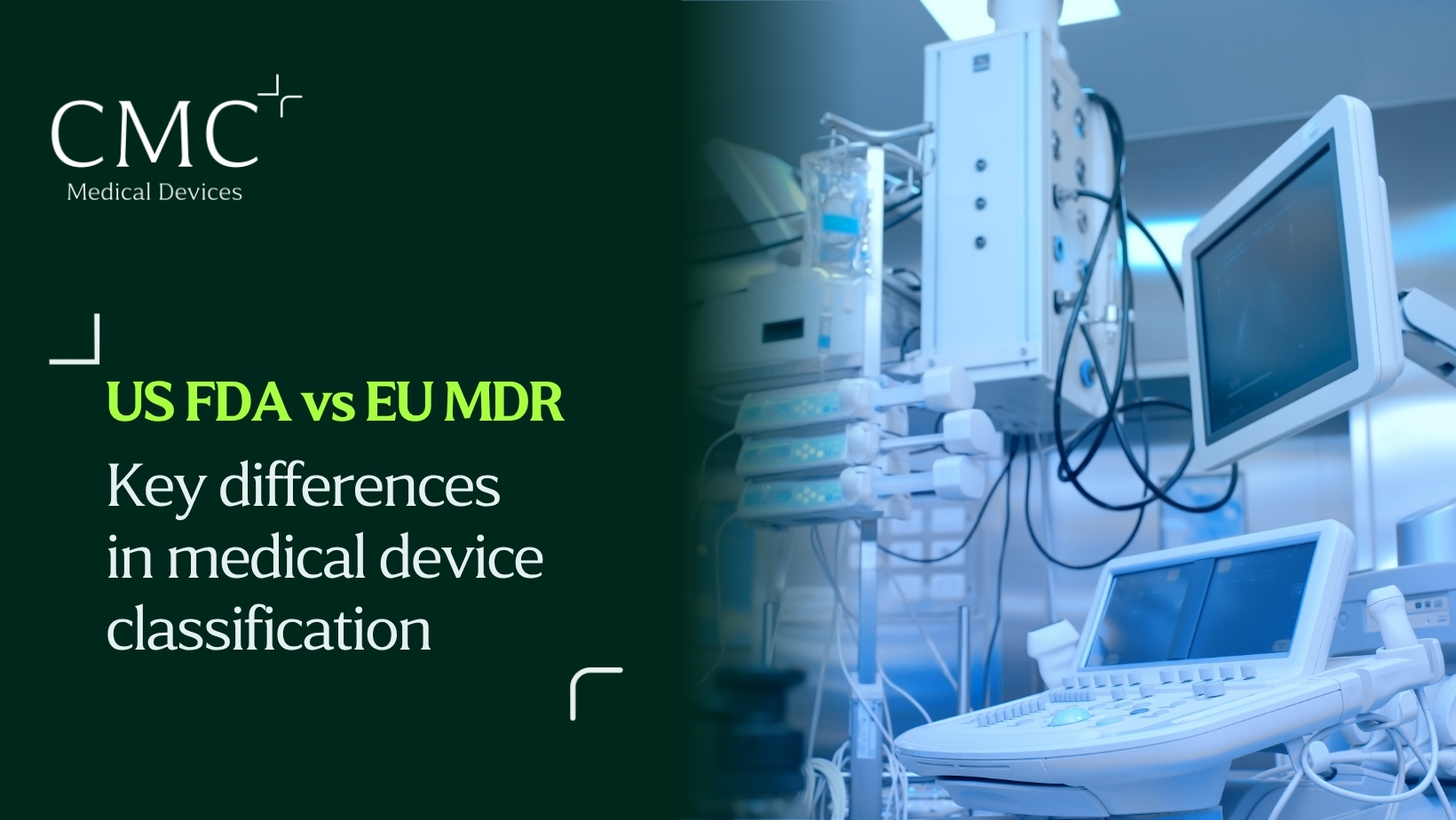US FDA vs EU MDR: Key differences in medical device classification
Selling a medical device in both the United States and the European Union means navigating two different regulatory systems.
Although both rely on risk-based classification, the criteria, terminology, and approval processes vary significantly. Misunderstanding these differences can lead to delays, non-compliance, or unnecessary costs. A clear understanding of both frameworks is crucial to streamline your global market access strategy.
Medical device classification under the MDR (EU)
The EU Medical Device Regulation (MDR 2017/745) divides devices into four risk-based classes:
- Class I (low risk), further divided into:
- Class I (standard) – non-sterile, non-measuring, non-reusable surgical
- Class Is – sterile
- Class Im – with measuring function
- Class Ir – reusable surgical
Only standard Class I devices can be self-certified by the manufacturer. All other subclasses require involvement of a Notified Body for the specific features (e.g. sterility, measuring accuracy, or reusability).
Higher-risk classes include:
- Class IIa – low to medium risk
- Class IIb – medium to high risk
- Class III – high risk
Classification rules are detailed in Annex VIII of the MDR, and manufacturers are responsible for correctly assigning the class based on factors like invasiveness, duration of use, and software components.
Medical device classification under the FDA (US)
The U.S. Food and Drug Administration (FDA) categorizes devices into three classes, based on the intended use and associated risk:
- Class I: low risk, subject to General Controls. Many are exempt from premarket submission.
- Class II: moderate risk, typically requiring a 510(k) premarket notification.
- Class III: high risk, requiring a Premarket Approval (PMA) with clinical evidence.
Each device is assigned a product code that defines its class and applicable regulatory requirements. The classification depends heavily on the intended use and similarity to previously approved devices (predicate devices).
5 key differences between FDA and MDR classifications
- Number of classes: MDR uses four risk classes, FDA uses three.
- Classification approach: The MDR follows 22 classification rules, while the FDA bases classification on intended use and product code.
- Certification path: In the EU, only standard Class I devices can be placed on the market without Notified Body involvement. All other classes (including Is, Im, Ir) require partial or full assessment. In the US, Class II and III devices require premarket submissions (510(k), De Novo, or PMA), while most Class I devices are exempt but still subject to general controls.
- Treatment of Class I devices: Only standard Class I devices under MDR can be fully self-declared. Others require partial review. Under FDA, many Class I devices are exempt from 510(k), but still subject to general controls.
- Software classification: A standalone software may be Class I under FDA but Class IIa or higher under MDR, depending on its medical function.
Common mistakes when dealing with both systems
Many manufacturers assume a direct match between MDR and FDA classes. In reality, trying to “map” one system onto the other often leads to:
- Misclassifying the device under FDA due to unclear intended use
- Failing to consider MDR Class I subdivisions (Is, Im, Ir)
- Assuming a CE-marked product automatically qualifies for 510(k) exemption
- Underestimating FDA’s clinical data expectations for PMA
- Ignoring differences in post-market obligations (EU requires PMS and PSUR; FDA focuses on adverse event reporting)
Need support with FDA and MDR classification?
At CMC Medical Devices, we support manufacturers in developing robust international regulatory strategies by providing tailored guidance on product classification under both MDR and FDA frameworks.
Our team assists in the preparation of fully compliant technical documentation for EU and US submissions, manages interactions with Notified Bodies and coordinates 510(k), PMA or De Novo procedures in close alignment with FDA requirements. This integrated approach helps streamline approvals and ensures faster, safer access to global markets.
Understanding classification differences is just the first step. If you’re planning to enter both markets or need support navigating regulatory pathways, we’re here to help.
Get in touch with our team to discuss your project and receive expert guidance tailored to your product and business goals.




